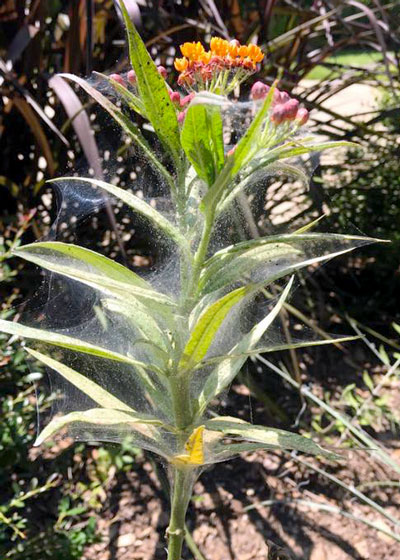Question of the Week: July 20, 2017

“Neil, what is this that’s hitting my plant? This webbing showed up really rapidly.”
Spider mites have several distinctions:
• They are the most damaging pests we have in Texas gardening.
• They are the smallest pests you’ll find in your landscape and garden. You could fit 20 of them side by side on the head of a pin.
• They attack more species of plants than any other common pest we encounter.
• They are mites (8 legs), not true insects. That means they’re more closely related to spiders and ticks.
Identifying the problem…
Know your plant species. While spider mites do attack many types of plants, some are much more likely to have them. Some that come readily to mind: marigolds, violets, beans, tomatoes, ageratum, crotons and yes, tropical milkweeds. Two people posted very similar questions on the milkweed on my Facebook page just three days ago. And plenty of others are asking about mites on other plants as well.
1. First signs are tiny tan mottling visible on the top surfaces of the leaves.
2. The mottling will become more prevalent until the leaves turn almost entirely white.
3. Fine webs begin to form in the axils of the leaves.
4. Soon entire portions of the plants are engulfed in the webs.
Step in to control them…
You must intervene no later than Number 2 above. Once webs are visible it’s usually too late.
If you thump a suspect leaf over white paper and can see the mites crawling around, it’s time to spray. Immediately!
We no longer have dedicated miticides, so you’ll have to use a general-purpose insecticide that also includes spider mites on its label.
Be sure you spray both top and bottom leaf surfaces. The mites hang out on the bottoms of the leaves, so spraying across the top alone won’t be enough.
Check the leaves a second time a few days later to see if there are still any live mites jogging around. There very possibly will be, in which case you’ll need to make another application.
